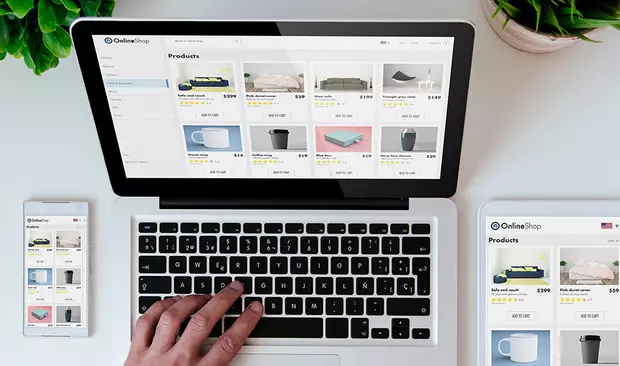Are you ready for omnichannel commerce?

In 2023’s fiercely competitive retail market, it’s vital that businesses are accessible on the channels that their consumers prefer.
Of course, this is not a one size fits all approach. Depending on the industry, size, product portfolio and customer base of an individual business, the sales channels which will generate the highest volume of traffic and conversions will vary.
What is omnichannel commerce?
Single-channel and multiple-channel commerce seem self-explanatory. Single-channel commerce may refer to one physical brick-and-mortar retail outlet, an ecommerce site, or a third-party ecommerce platform. Multi-channel commerce refers to a single business utilising multiple sales channels, including a mixture of physical stores and web-based platforms.
While omnichannel commerce refers to a single business’s multiple sales channels, the significant difference between this and multi-channel commerce is integration.
Whether it’s an in-store or pop-up shop’s EPOS system, ecommerce website or through a third-party integration like Amazon, eBay or Etsy – omnichannel commerce links all its sales platforms and data processes through software integration.
By automating updates in real-time across the multiple sales channels, businesses have complete visibility and traceability of sales activity across their entire operation.
What’s been sold, where it’s been sold and who has it been sold to? This information is available at the click of a button.
Are you ready for omnichannel commerce?
If you’re a business which uses multiple commerce platforms to generate orders, sales and enquiries, then you are ready for this integration.
Integrating your multiple sales channels will provide clear, intelligent and real-time insights on essential metrics.
What are the main benefits?
1. Sales order processing
By having all your sales platforms integrated into one centralised solution, you’re able to streamline your sales order processing and automatically deliver updates across all your platforms. Whether a transaction has happened in-store via EPOS or online, your back-end systems will be synchronised in real-time.
An omnichannel solution provides clear visibility and traceability on the progress of order fulfilment.
2. Stock control
With this level of integration, your different sales platforms will automatically update when items are purchased and returned, to ensure real-time stock level visibility across multiple platforms.
While also operating as an inventory management system, this ensures stock replenishment is fulfilled accordingly and avoids over and understocking in the warehouse and in-store. Stock levels will also be integrated with your ecommerce site with stock availability adjusting as levels alter as well as providing your customers with the option to request alerts.
3. Customer service
In addition to allowing your customers the power to place their favourited items in wishlists and baskets, integrated commerce can easily set custom pricing based on the individual consumer. You can also set up loyalty schemes and create different deals for your peak season or marketing campaigns.
Whether your customers order in-store or online, you can provide flexible delivery options to include home, in-store or depot, as well as selecting different time slots and providing options for more eco-friendly deliveries.
You can also provide your customers with regular updates on their deliveries, promotions and stock availability.
4. Forecasting and reporting
With the enhanced visibility provided on your stock control, consumer behaviour and logistical operations, you can forecast future demands more accurately to drive sales.
Real-time data across all areas of your business can be viewed and analysed in-depth at the click of a button. With this reporting functionality, you can make much faster and more profitable business decisions with the potential to generate new customers and retain existing ones.
5. Returns
Undoubtedly, the rise in online retail has increased the capacity of returned goods, with one in three of all online orders returned. However, integrated commerce streamlines return processes for both businesses and customers.
Omnichannel commerce software will create a linked return from multiple sales and purchase orders while easily managing warranty timescales and providing access to complete batch and serial traceability.
You can also create questionnaires when returns arise to ascertain your customers’ experience to increase consumer spend and loyalty.
Find out more
Speak to one of our specialists today to find out how OrderWise’s integration can impact and benefit your retail or trade operations.